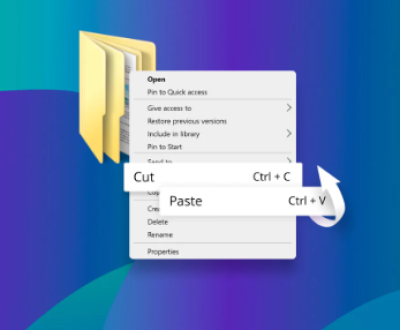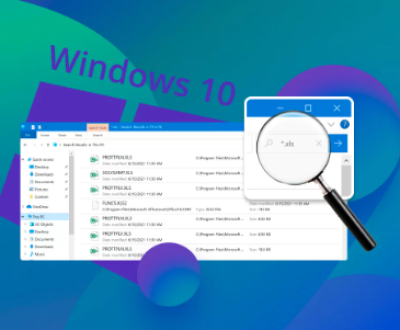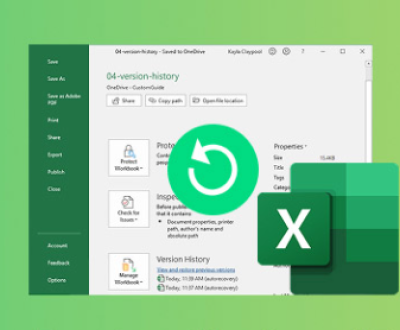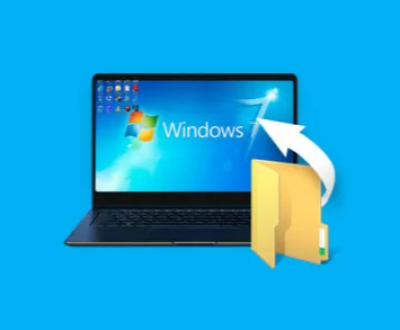Recovering deleted data from an external hard disk can be a daunting task, but it’s not impossible. Whether you accidentally deleted files, lost data due to a system crash, or the external hard disk encountered some form of corruption, data recovery can often be achieved with the right tools and methods.
1. External hard disks
External hard disks are used widely for data storage and backup due to their portability and high storage capacity. However, like any storage device, external hard disks can suffer from data loss due to accidental deletion, file system corruption, formatting errors, or hardware failures. When files are deleted from an external hard disk, the data doesn’t disappear immediately. Instead, the operating system marks the space as available for new data, and as long as no new data is written to that space, the deleted files can often be recovered.

2. Data Deletion and Recovery
What Happens When You Delete Files?
When you delete a file from an external hard disk, the operating system removes the reference to the file from the directory, making it invisible to the user. However, the actual data remains on the disk until it is overwritten by new data. If you stop using the external drive immediately after the deletion, there’s a high chance the deleted data can be recovered.
Permanent Deletion: In some cases, such as when files are deleted using Shift+Delete on Windows or through the command line, the files are permanently deleted from the file system. This means the system no longer tracks them, but the data can still be physically present on the disk.
Recycling Bin/Trash: When files are deleted normally, they are moved to the Recycle Bin (Windows) or Trash (macOS). If the files are still in the bin, they can easily be restored by simply restoring them from the bin.
Types of Data Loss Scenarios
Data loss on an external hard disk can occur due to various reasons, and the recovery process may vary depending on the scenario. Here are a few common types:
Accidental Deletion: Deleting files by mistake is one of the most common causes of data loss.
Formatting: If you accidentally format the external hard disk, all files are removed, but recovery may still be possible.
Corruption: File system corruption can make your data inaccessible, but data may still be recoverable.
Partition Loss: If the partition on the external hard disk is deleted or damaged, the data can be recovered using specialized software.
Hardware Failure: In the case of physical damage to the external hard disk, professional recovery services might be required.
3. Important Precautions Before Starting Recovery
Before diving into data recovery, there are a few crucial precautions to take in order to increase the chances of a successful recovery.
Don’t Write Data to the Drive
The most important rule in data recovery is to avoid writing any new data to the external hard disk from which you want to recover files. If new data is written to the disk, it could overwrite the space where the deleted data was stored, making recovery more difficult or even impossible.
Assess the Situation and Identify the Cause of Data Loss
Understand how the data was lost to choose the appropriate recovery method. For instance, if you’ve simply emptied the Recycle Bin or Trash, you can restore the files easily. However, if the drive was formatted or corrupted, more advanced methods like using data recovery software will be required.
4. Step-by-Step Guide to Recover Deleted Data
There are several methods available for recovering deleted data from an external hard disk. Let’s explore them in detail.
Method 1: Using Built-In Operating System Features
Windows File History
Windows has a built-in backup tool called File History, which continuously backs up your personal files to an external or network drive. If you’ve been using File History, you may be able to recover deleted files from the backup.
Steps to recover with File History:
Connect the external hard disk to your PC.
Open the folder where the deleted file was originally stored.
Right-click the folder and select “Restore previous versions.”
From the list of available backups, choose a version before the file was deleted.
Click “Restore” to recover the deleted files.
macOS Time Machine
If you are using macOS, Time Machine is another built-in tool that periodically backs up files to an external disk.
Steps to recover with Time Machine:
Connect the external hard disk to your Mac.
Open the folder where the deleted file was located.
Launch Time Machine by clicking the Time Machine icon in the menu bar and selecting “Enter Time Machine.”
Browse through the timeline to find the backup version that contains your deleted file.
Select the file and click “Restore” to recover it.
Method 2: Using Data Recovery Software
Panda Assistant is a user-friendly data recovery tool designed to help individuals and businesses recover lost, deleted, or corrupted files from various storage devices, including external hard drives, USB drives, memory cards, and more. Developed by Panda Security, a well-known cybersecurity company, Panda Assistant provides a robust solution for those looking to recover data from situations where traditional methods might fail. Whether you’ve accidentally deleted important files, suffered from a system crash, or experienced a hardware malfunction, Panda Assistant is designed to help you get your data back with minimal effort.
Key Features of Panda Assistant
Comprehensive Data Recovery
Panda Assistant supports a wide range of file types, including documents, photos, videos, music, and emails. It is capable of recovering files from both Windows and macOS systems. The software works on external drives, internal hard drives, and removable storage media, making it versatile for different recovery scenarios. It also supports various file systems such as NTFS, FAT32. exFAT, and HFS+.
User-Friendly Interface
Panda Assistant is designed with simplicity in mind. Its intuitive interface allows users to easily navigate through the recovery process, even if they have no prior experience with data recovery tools. The software guides users step-by-step, making it accessible for both beginners and advanced users.
Advanced Scanning Technology
Panda Assistant uses advanced scanning algorithms to thoroughly search storage devices for recoverable files. It offers two types of scanning modes: quick scan and deep scan. The quick scan option is faster and is ideal for recovering recently deleted files, while the deep scan mode is more thorough and can help recover files that have been lost for an extended period or are hidden due to corruption.
Preview and Selective Recovery
Before performing the final recovery, Panda Assistant allows users to preview the found files. This feature helps you verify that the right files are being recovered and ensures that you don’t waste time recovering unnecessary or irrelevant files. You can selectively recover specific files or entire folders based on your preferences.
Recovery from Corrupted or Formatted Drives
One of the standout features of Panda Assistant is its ability to recover data from corrupted or formatted storage devices. Whether your drive is damaged due to a system crash, accidental formatting, or logical errors, Panda Assistant can scan the drive and retrieve files that may seem permanently lost.
Secure and Safe Recovery Process
Panda Assistant ensures that the recovery process is safe for your data. It avoids overwriting or modifying the files on the storage device during scanning. This minimizes the risk of causing further data loss or damage, making it one of the safest recovery tools available.
Cross-Platform Support
While many data recovery tools are designed to work only on Windows, Panda Assistant supports both Windows and macOS. This makes it an ideal solution for users who work in mixed environments or have multiple devices running different operating systems.
Data Export and Save Options
Once the recovery process is complete, Panda Assistant allows users to save the recovered files to a different drive or storage location. This ensures that the recovery process doesn’t overwrite the very data you’re trying to recover.
Method 3: Professional Data Recovery Services
If your external hard disk has suffered physical damage or if the data is heavily corrupted, you may need to seek professional data recovery services. These services have specialized tools and expertise to recover data from damaged disks. However, they can be expensive, and there’s no guarantee that all data will be recovered.
5. Advanced Techniques for Difficult Recoveries
In some cases, you may need to employ more advanced recovery techniques to retrieve deleted files.
Using Command Prompt (Windows)
Windows users can attempt recovery using the built-in Command Prompt.
Steps to use Command Prompt:
Open Command Prompt as an administrator.
Type chkdsk X: /f (replace X with the letter of the external hard disk).
Press Enter and let the command scan and fix any errors on the drive.
Using Terminal (macOS)
On macOS, you can use the Terminal to attempt recovery.
Steps to use Terminal:
Open Terminal.
Type sudo fsck_hfs -r /dev/disk2s1 (replace the disk identifier with the one corresponding to your external hard disk).
Press Enter to check and repair the file system.
Disk Repair Tools
Using disk repair tools like Panda Assistant can help fix file system errors and recover data from corrupted drives.
6. How to Avoid Future Data Loss
Preventing data loss is just as important as recovering it. Here are some tips to minimize the risk of losing valuable data in the future:
Backup Regularly: Use built-in backup software or cloud-based services to create regular backups.
Use Data Redundancy: Employ a RAID setup or external backup drives to create redundancy.
Store Critical Files in Multiple Locations: Don’t rely solely on a single storage device for critical data.
About us and this blog
Panda Assistant is built on the latest data recovery algorithms, ensuring that no file is too damaged, too lost, or too corrupted to be recovered.
Request a free quote
We believe that data recovery shouldn’t be a daunting task. That’s why we’ve designed Panda Assistant to be as easy to use as it is powerful. With a few clicks, you can initiate a scan, preview recoverable files, and restore your data all within a matter of minutes.
Subscribe to our newsletter!
More from our blog
See all postsRecent Posts
- How to restore lost files on sd card 2025-07-03
- How to restore lost files 2025-07-03
- How to restore lost word document 2025-07-03

 Try lt Free
Try lt Free Recovery success rate of up to
Recovery success rate of up to









